
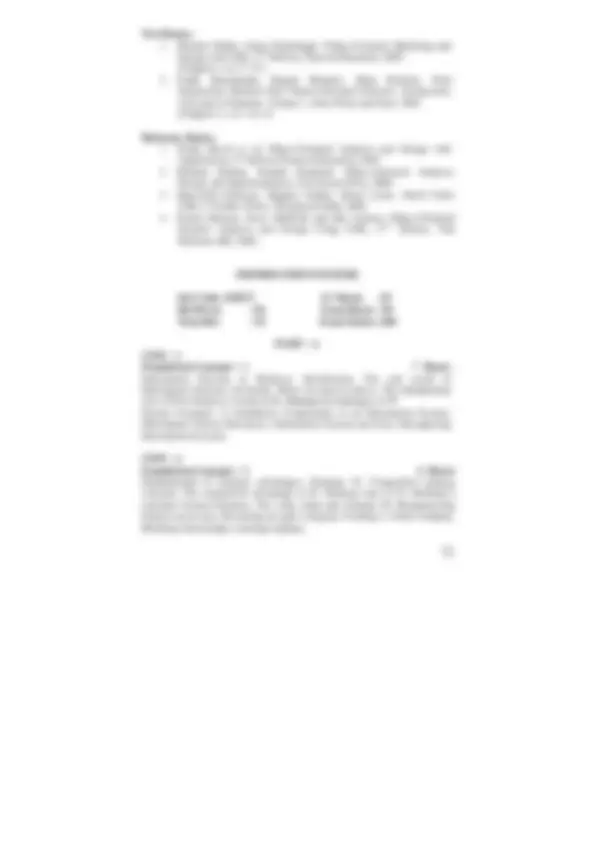
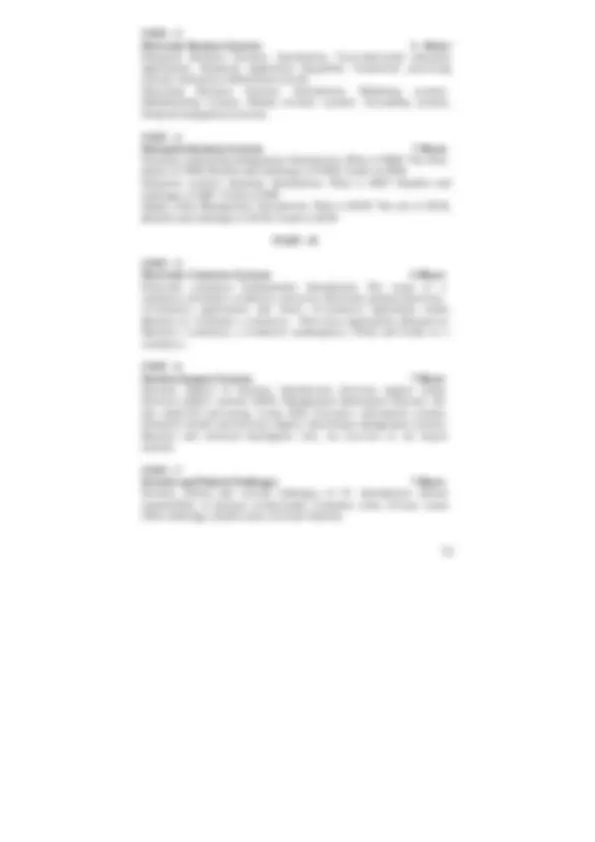
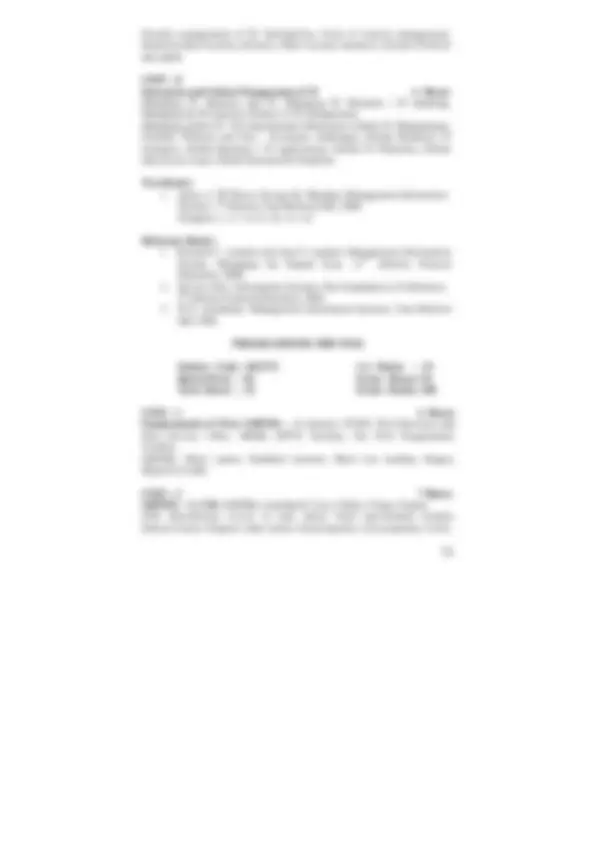
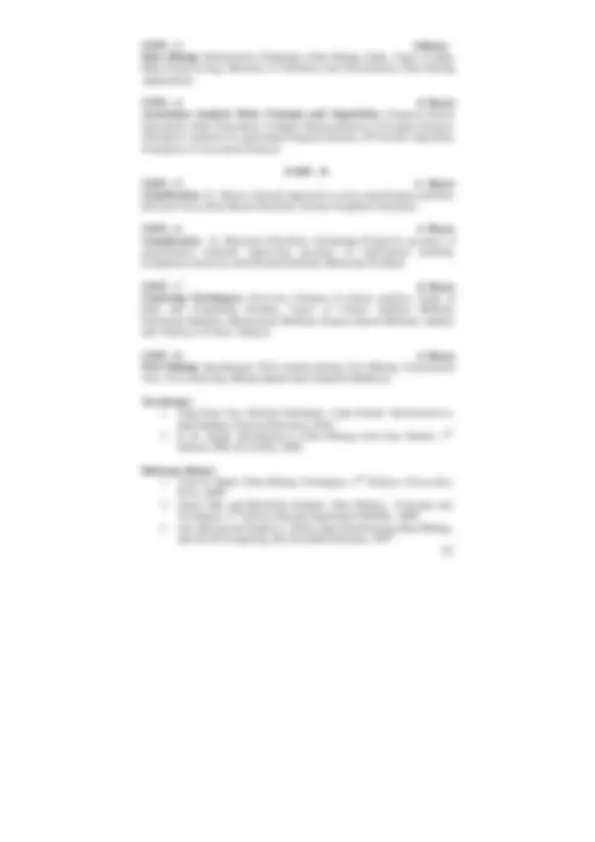
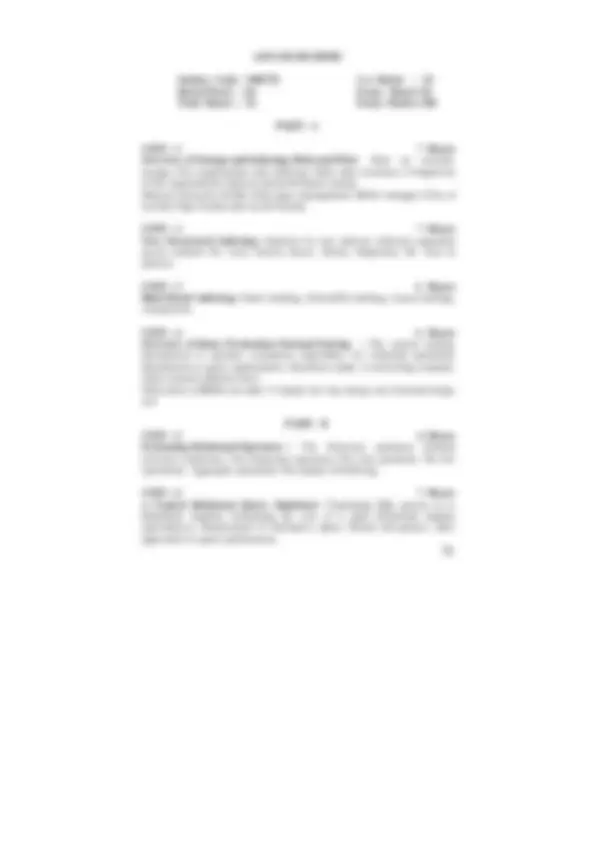
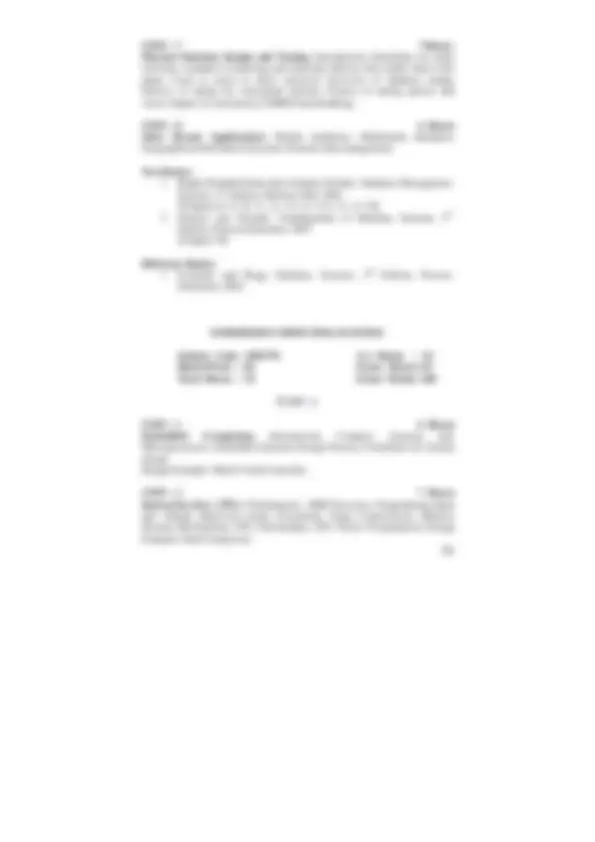
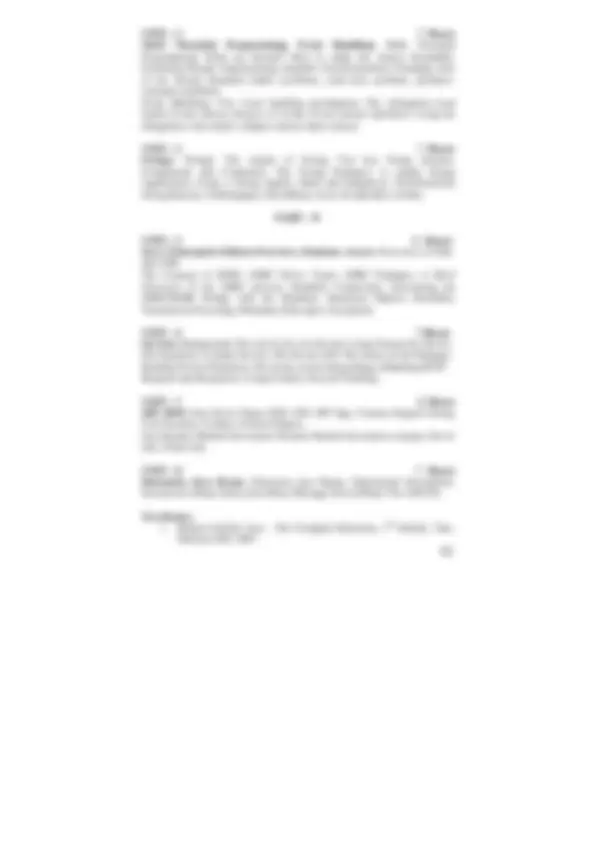
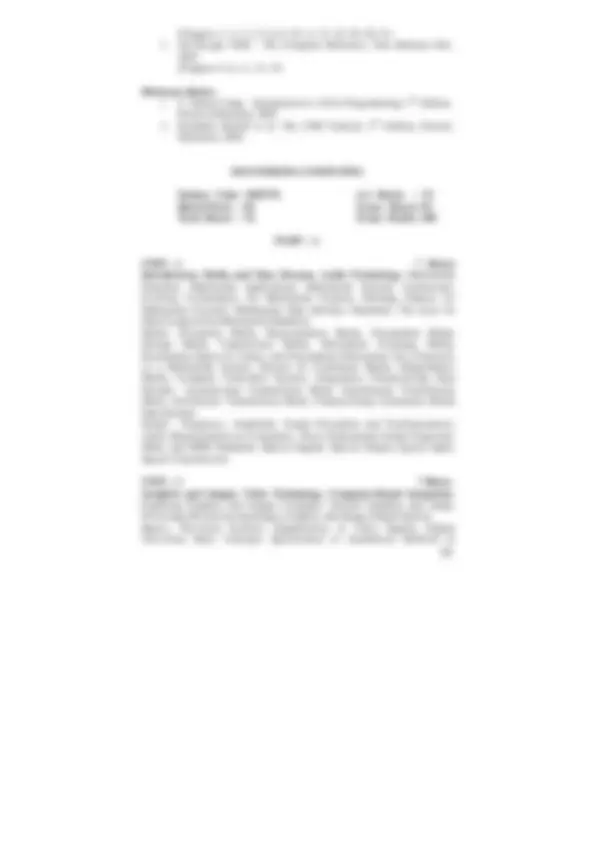
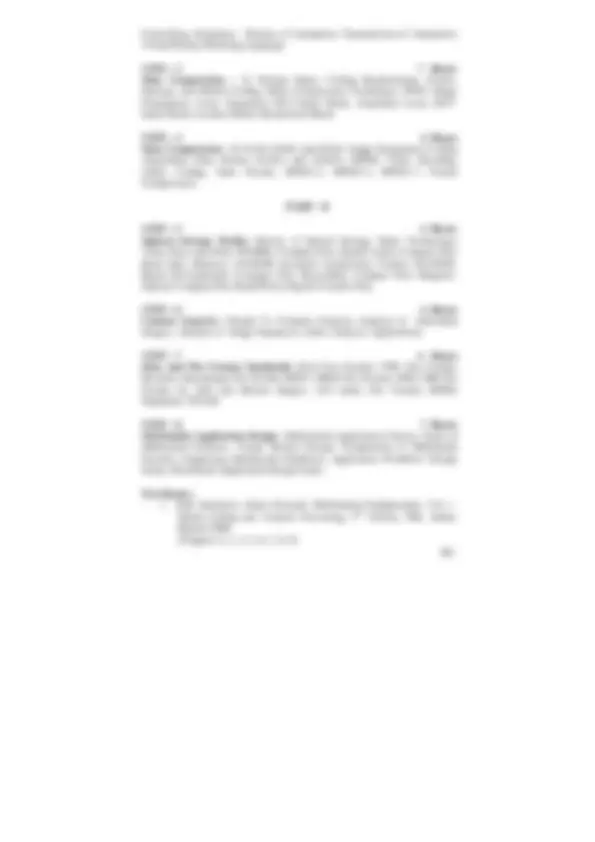
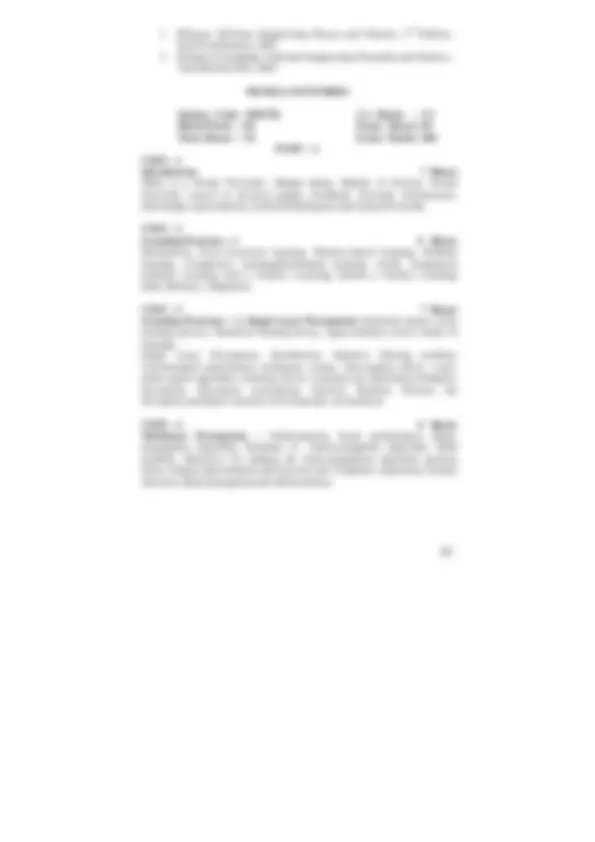
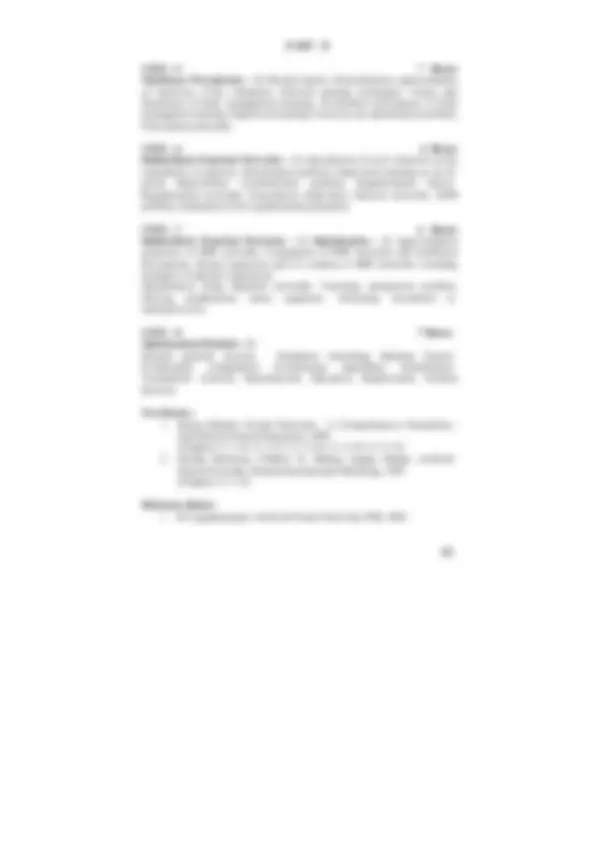
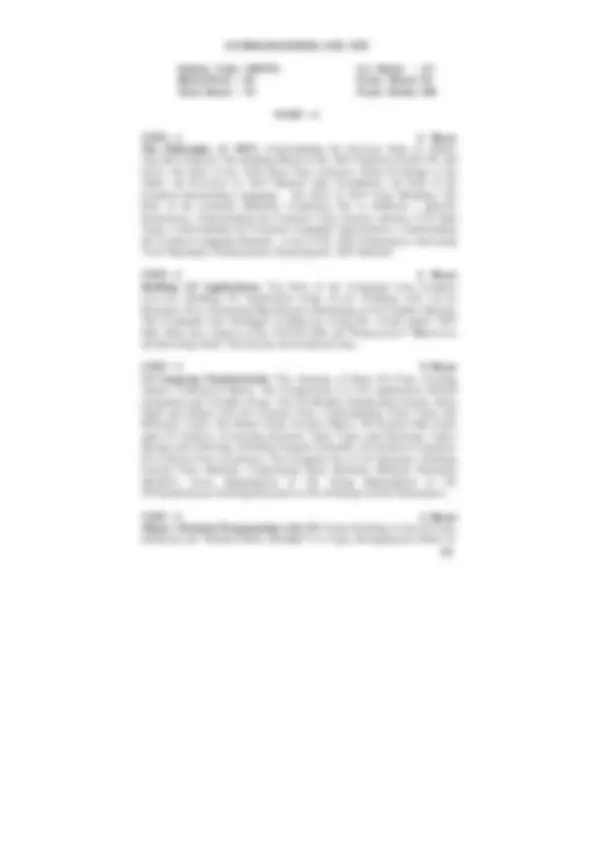
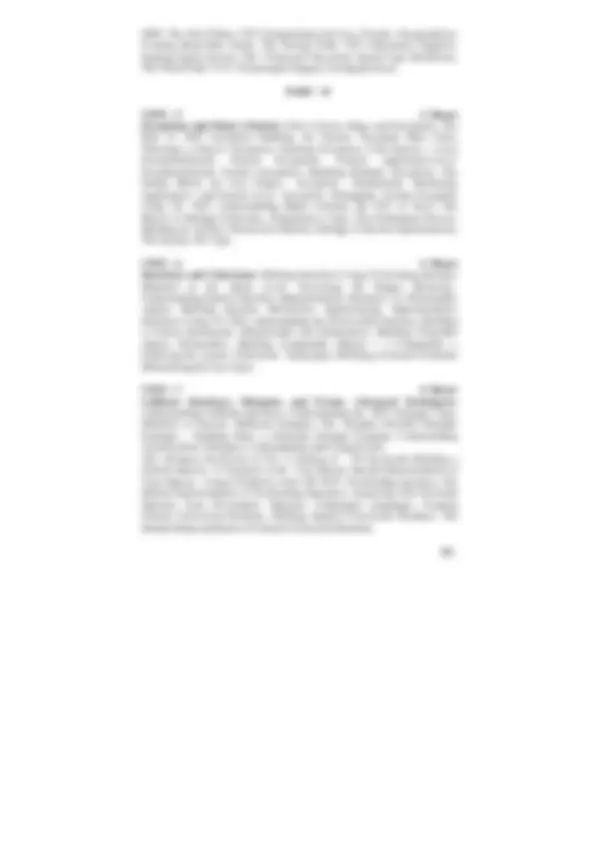
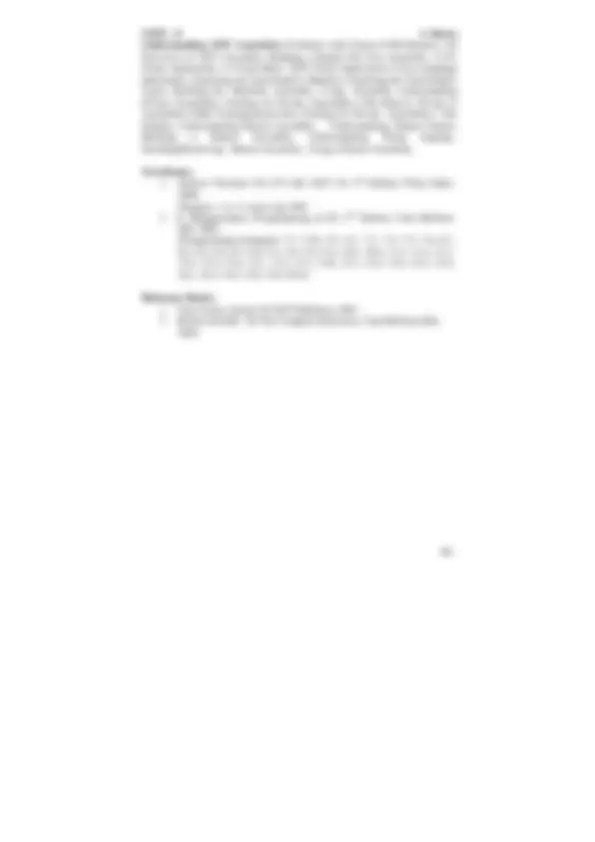
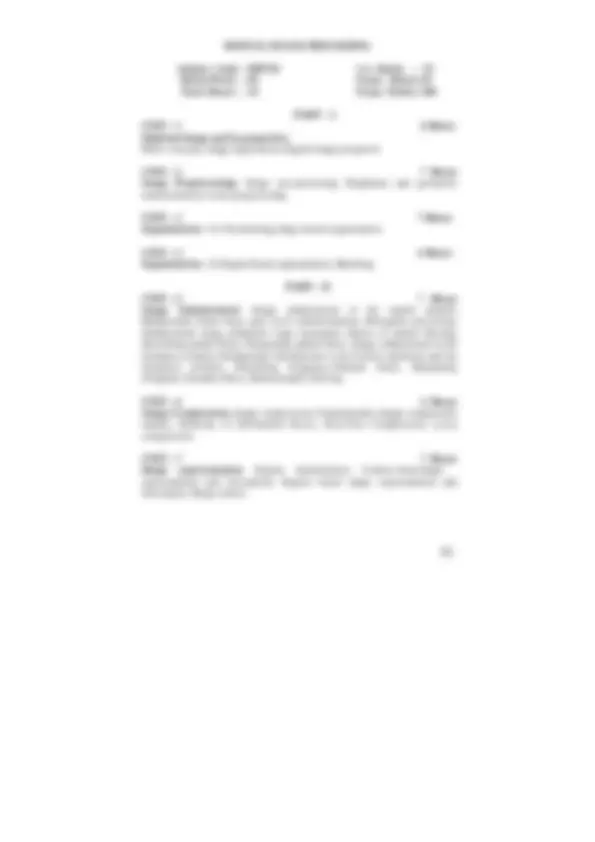
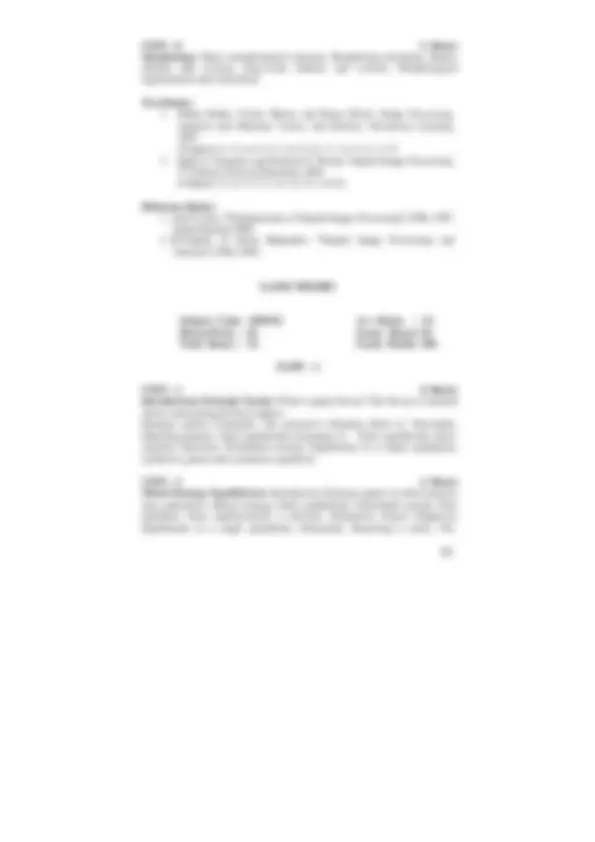
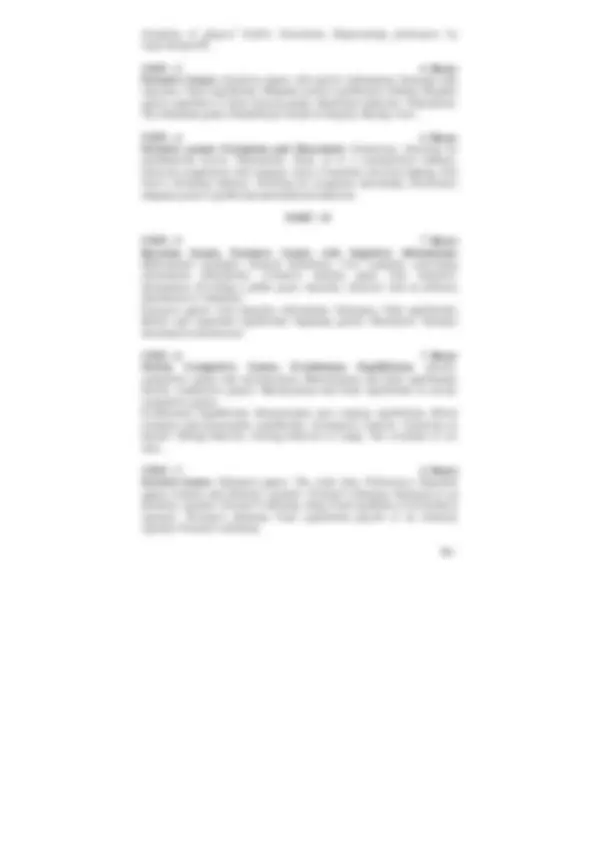
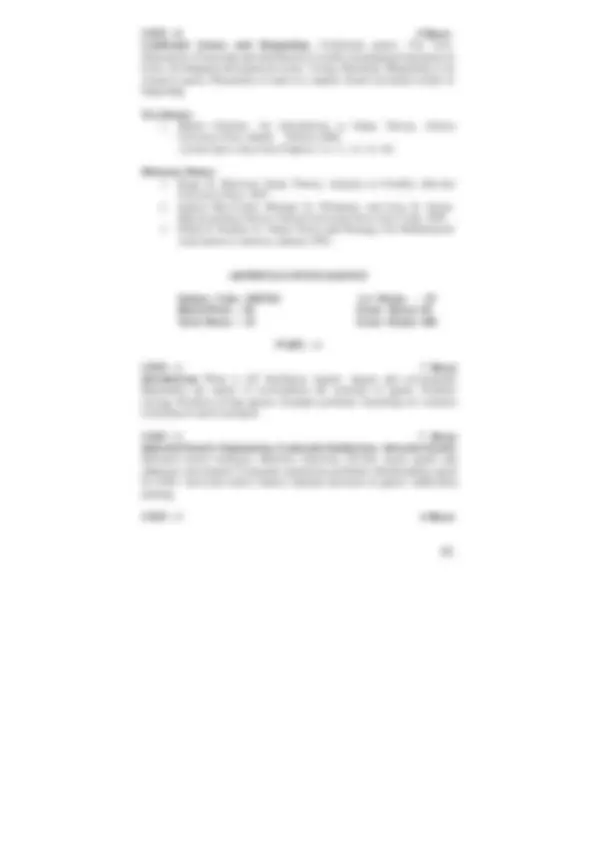
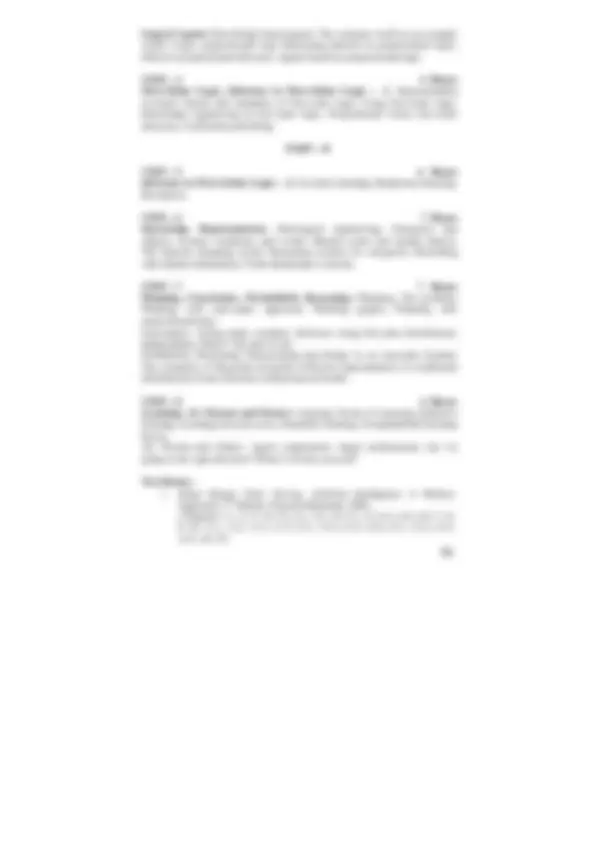
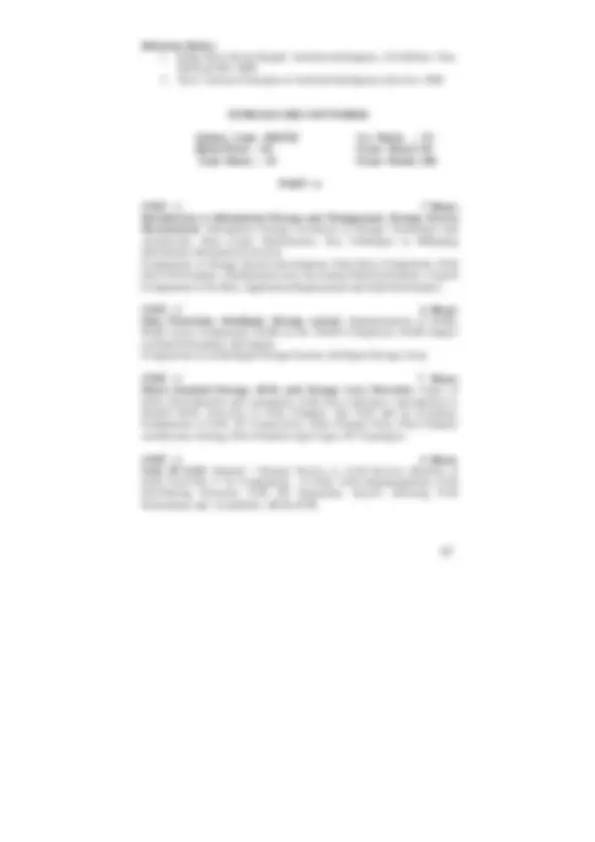
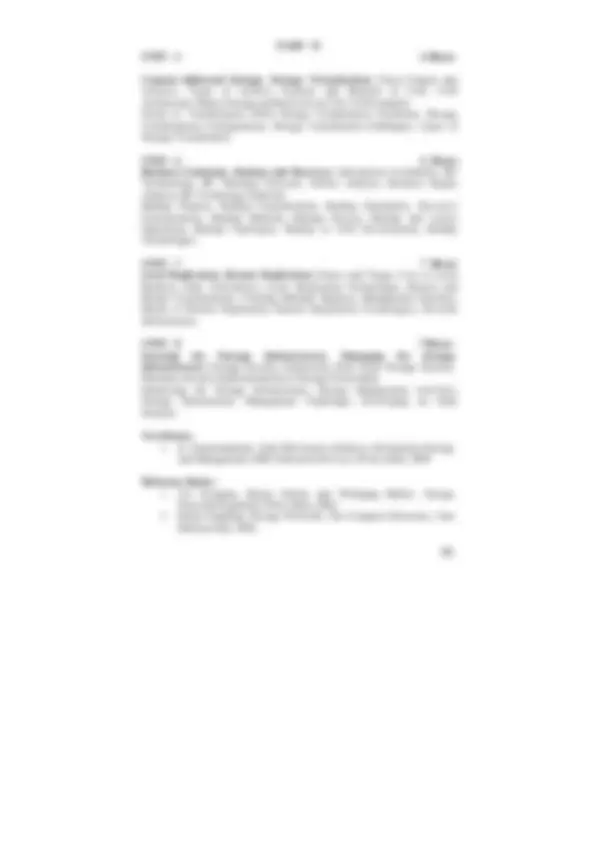
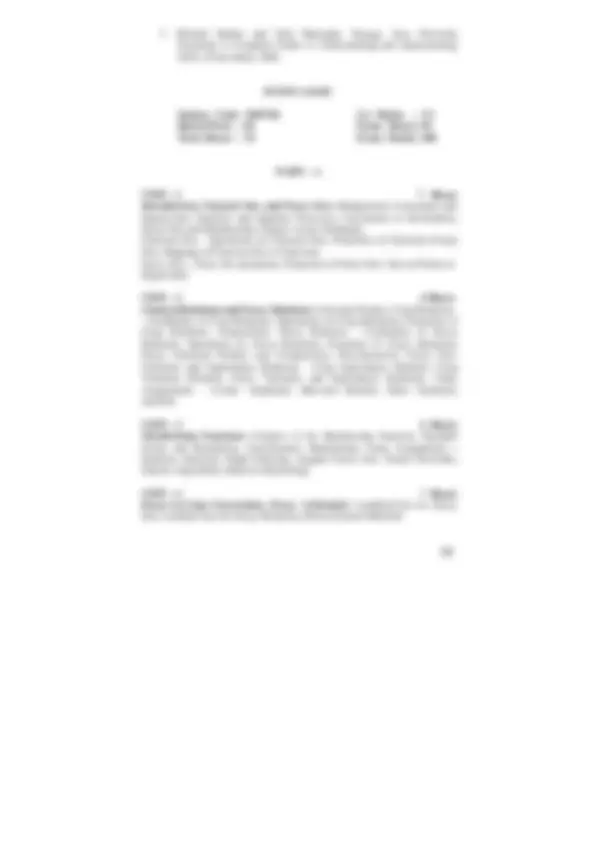
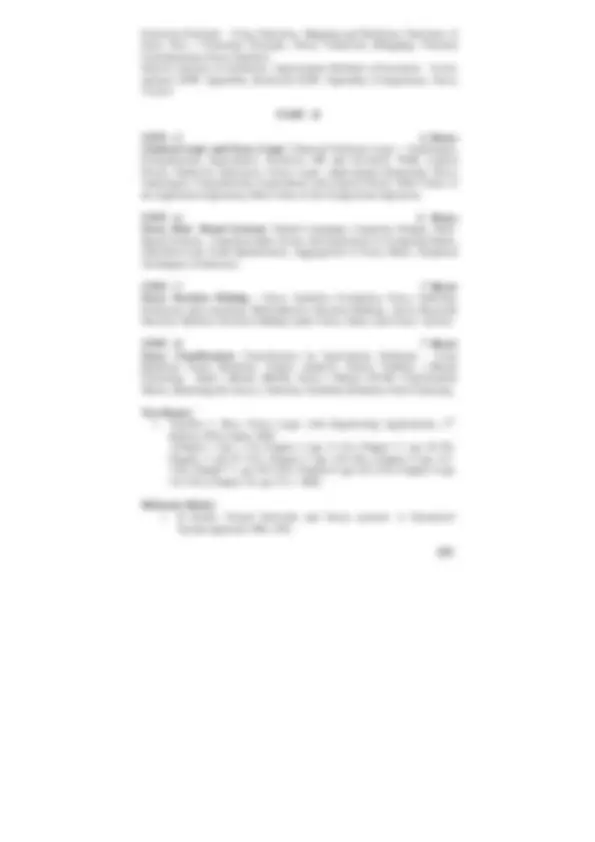
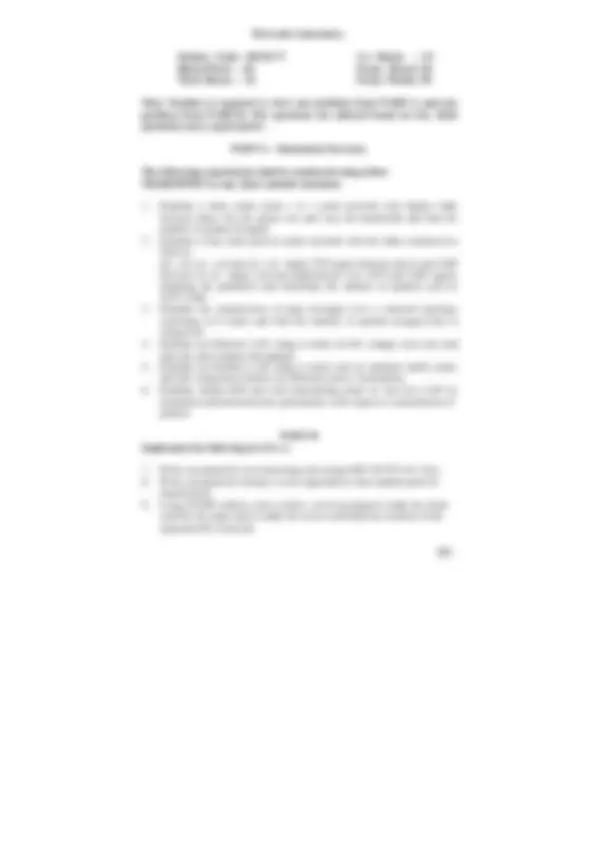
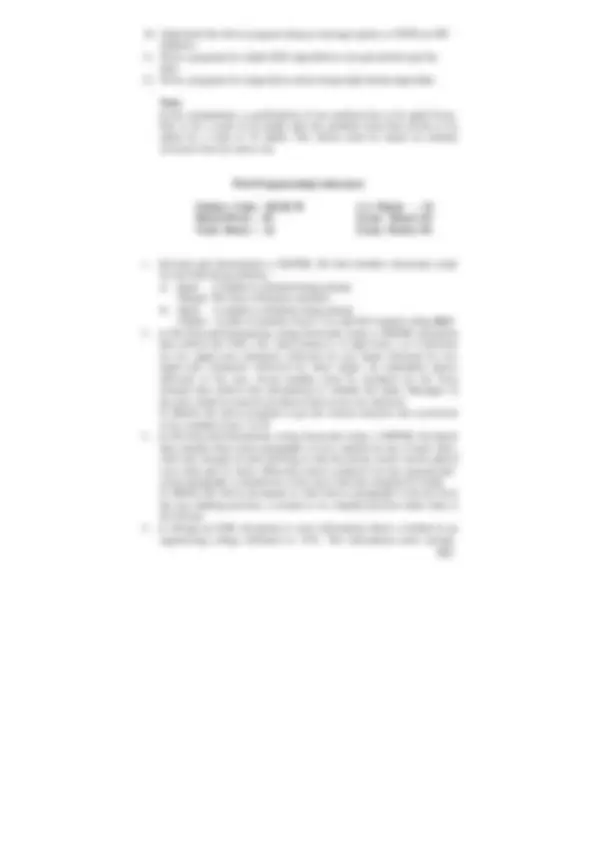
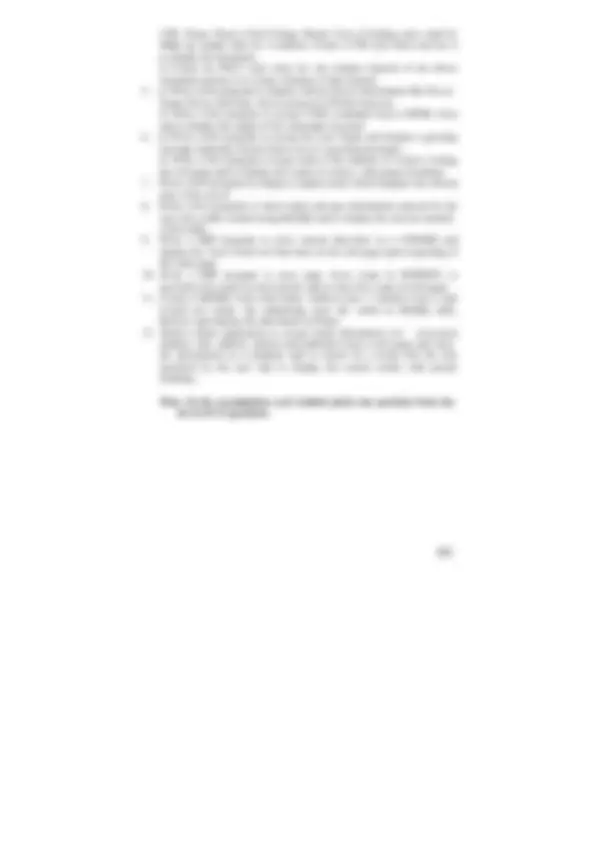


Study with the several resources on Docsity

Earn points by helping other students or get them with a premium plan


Prepare for your exams
Study with the several resources on Docsity

Earn points to download
Earn points by helping other students or get them with a premium plan
Community
Ask the community for help and clear up your study doubts
Discover the best universities in your country according to Docsity users
Free resources
Download our free guides on studying techniques, anxiety management strategies, and thesis advice from Docsity tutors
Object oriented analysis and design
Typology: Exercises
1 / 34

This page cannot be seen from the preview
Don't miss anything!



























Subject Code: 10CS71 I.A. Marks : 25 Hours/Week : 04 Exam Hours: 03 Total Hours : 52 Exam Marks: 100
UNIT – 1 7 Hours Introduction, Modeling Concepts, class Modeling: What is Object Orientation? What is OO development? OO themes; Evidence for usefulness of OO development; OO modeling history Modeling as Design Technique: Modeling; abstraction; The three models. Class Modeling: Object and class concepts; Link and associations concepts; Generalization and inheritance; A sample class model; Navigation of class models; Practical tips.
UNIT – 2 6 Hours Advanced Class Modeling, State Modeling: Advanced object and class concepts; Association ends; N-ary associations; Aggregation; Abstract classes; Multiple inheritance; Metadata; Reification; Constraints; Derived data; Packages; Practical tips. State Modeling: Events, States, Transitions and Conditions; State diagrams; State diagram behavior; Practical tips.
UNIT – 3 6 Hours Advanced State Modeling, Interaction Modeling: Advanced State Modeling: Nested state diagrams; Nested states; Signal generalization; Concurrency; A sample state model; Relation of class and state models; Practical tips. Interaction Modeling: Use case models; Sequence models; Activity models. Use case relationships; Procedural sequence models; Special constructs for activity models.
UNIT – 4 7 Hours Process Overview, System Conception, Domain Analysis: Process Overview: Development stages; Development life cycle. System Conception: Devising a system concept; Elaborating a concept; Preparing a problem statement. Domain Analysis: Overview of analysis; Domain class model; Domain state model; Domain interaction model; Iterating the analysis.
UNIT – 5 7 Hours Application Analysis, System Design: Application Analysis: Application interaction model; Application class model; Application state model; Adding operations. Overview of system design; Estimating performance; Making a reuse plan; Breaking a system in to sub-systems; Identifying concurrency; Allocation of sub-systems; Management of data storage; Handling global resources; Choosing a software control strategy; Handling boundary conditions; Setting the trade-off priorities; Common architectural styles; Architecture of the ATM system as the example.
UNIT – 6 7 Hours Class Design, Implementation Modeling, Legacy Systems: Class Design: Overview of class design; Bridging the gap; Realizing use cases; Designing algorithms; Recursing downwards, Refactoring; Design optimization; Reification of behavior; Adjustment of inheritance; Organizing a class design; ATM example. Implementation Modeling: Overview of implementation; Fine-tuning classes; Fine-tuning generalizations; Realizing associations; Testing. Legacy Systems: Reverse engineering; Building the class models; Building the interaction model; Building the state model; Reverse engineering tips; Wrapping; Maintenance.
UNIT – 7 6 Hours Design Patterns – 1: What is a pattern and what makes a pattern? Pattern categories; Relationships between patterns; Pattern description Communication Patterns: Forwarder-Receiver; Client-Dispatcher-Server; Publisher-Subscriber.
UNIT – 8 6 Hours Design Patterns – 2, Idioms: Management Patterns: Command processor; View handler. Idioms: Introduction; what can idioms provide? Idioms and style; Where to find idioms; Counted Pointer example
Electronic Business Systems 6 Hours Enterprise Business Systems: Introduction, Cross-functional enterprise applications, Enterprise application integration, Transaction processing systems, Enterprise collaboration systems. Functional Business Systems: Introduction, Marketing systems, Manufacturing systems, Human resource systems, Accounting systems, Financial management systems.
Enterprise Business Systems 7 Hours Customer relationship management: Introduction, What is CRM? The three phases of CRM, Benefits and challenges of CRM, Trends in CRM Enterprise resource planning: Introduction, What is ERP? Benefits and challenges of ERP, Trends in ERP. Supply chain Management: Introduction, What is SCM? The role of SCM, Benefits and challenges of SCM, Trends in SCM
Electronic Commerce Systems 6 Hours Electronic commerce fundamentals: Introduction, The scope of e- commerce, Essential e-commerce, processes, Electronic payment processes. e-Commerce applications and issues: E-commerce application trends, Business-to- Consumer e-commerce, Web store requirements, Business-to- Business e-commerce, e-commerce marketplaces, Clicks and bricks in e- commerce.
Decision Support Systems 7 Hours Decision support in business: Introduction, Decision support trends, Decision support systems (DSS), Management Information Systems, On- line analytical processing, Using DSS, Executive information systems, Enterprise portals and decision support, Knowledge management systems, Business and Artificial Intelligence (AI), An overview of AI, Expert systems.
Security and Ethical Challenges 7 Hours Security, Ethical and societal challenges of IT: Introduction, Ethical responsibility of business professionals, Computer crime, Privacy issues, Other challenges, Health issues, Societal solutions.
Security management of IT: Introduction, Tools of security management, Internetworked security defenses, Other security measures, System Controls and audits.
Enterprise and Global Management of IT 6 Hours Managing IT: Business and IT, Managing IT, Business / IT planning, Managing the IS function, Failures of IT management. Managing global IT: The International Dimension, Global IT Management, Cultural, Political and Geo - Economic challenges, Global Business/ IT strategies, Global Business / IT applications, Global IT Platforms, Global data access issues, Global Systems development.
Text Books:
Reference Books:
Subject Code: 10CS73 I.A. Marks : 25 Hours/Week : 04 Exam Hours: 03 Total Hours : 52 Exam Marks: 100
UNIT – 1 6 Hours Fundamentals of Web, XHTML – 1: Internet, WWW, Web Browsers and Web Servers, URLs, MIME, HTTP, Security, The Web Programmers Toolbox. XHTML: Basic syntax, Standard structure, Basic text markup, Images, Hypertext Links.
UNIT – 2 7 Hours XHTML – 2, CSS: XHTML (continued): Lists, Tables, Forms, Frames CSS: Introduction, Levels of style sheets, Style specification formats, Selector forms, Property value forms, Font properties, List properties, Color,
UNIT – 8 7 Hours Ruby, Rails: Origins and uses of Ruby, Scalar types and their operations, Simple input and output, Control statements, Arrays, Hashes, Methods, Classes, Code blocks and iterators, Pattern matching. Overview of Rails, Document requests, Processing forms, Rails applications with Databases, Layouts.
Text Books:
Reference Books:
Subject Code: 10IS74 I.A. Marks : 25 Hours/Week : 04 Exam Hours: 03 Total Hours : 52 Exam Marks: 100
UNIT – 1 6 Hours Data Warehousing: Introduction, Operational Data Stores (ODS), Extraction Transformation Loading (ETL), Data Warehouses. Design Issues, Guidelines for Data Warehouse Implementation, Data Warehouse Metadata
UNIT – 2 6 Hours Online Analytical Processing (OLAP): Introduction, Characteristics of OLAP systems, Multidimensional view and Data cube, Data Cube Implementations, Data Cube operations, Implementation of OLAP and overview on OLAP Softwares.
UNIT – 3 6 Hours Data Mining: Introduction, Challenges, Data Mining Tasks, Types of Data, Data Preprocessing, Measures of Similarity and Dissimilarity, Data Mining Applications
UNIT – 4 8 Hours Association Analysis: Basic Concepts and Algorithms: Frequent Itemset Generation, Rule Generation, Compact Representation of Frequent Itemsets, Alternative methods for generating Frequent Itemsets, FP Growth Algorithm, Evaluation of Association Patterns
UNIT – 5 6 Hours Classification -1 : Basics, General approach to solve classification problem, Decision Trees, Rule Based Classifiers, Nearest Neighbor Classifiers.
UNIT – 6 6 Hours Classification - 2 : Bayesian Classifiers, Estimating Predictive accuracy of classification methods, Improving accuracy of clarification methods, Evaluation criteria for classification methods, Multiclass Problem.
UNIT – 7 8 Hours Clustering Techniques: Overview, Features of cluster analysis, Types of Data and Computing Distance, Types of Cluster Analysis Methods, Partitional Methods, Hierarchical Methods, Density Based Methods, Quality and Validity of Cluster Analysis
UNIT – 8 6 Hours Web Mining: Introduction, Web content mining, Text Mining, Unstructured Text, Text clustering, Mining Spatial and Temporal Databases.
Text Books:
Reference Books:
UNIT – 7 7 Hours Physical Database Design and Tuning: Introduction; Guidelines for index selection, examples; Clustering and indexing; Indexes that enable index-only plans; Tools to assist in index selection; Overview of database tuning; Choices in tuning the conceptual schema; Choices in tuning queries and views; Impact of concurrency; DBMS benchmarking.
UNIT – 8 6 Hours More Recent Applications: Mobile databases; Multimedia databases; Geographical Information Systems; Genome data management
Text Books:
Reference Books:
Subject Code: 10IS752 I.A. Marks : 25 Hours/Week : 04 Exam Hours: 03 Total Hours : 52 Exam Marks: 100
UNIT – 1 6 Hours Embedded Computing: Introduction, Complex Systems and Microprocessors, Embedded Systems Design Process, Formalism for System design Design Example: Model Train Controller.
UNIT – 2 7 Hours Instruction Sets, CPUs: Preliminaries, ARM Processor, Programming Input and Output, Supervisor mode, Exceptions, Traps, Coprocessors, Memory Systems Mechanisms, CPU Performance, CPU Power Consumption. Design Example: Data Compressor.
UNIT – 3 6 Hours Bus-Based Computer Systems: CPU Bus, Memory Devices, I/O devices, Component Interfacing, Designing with Microprocessor, Development and Debugging, System-Level Performance Analysis Design Example: Alarm Clock.
UNIT – 4 7 Hours Program Design and Analysis: Components for embedded programs, Models of programs, Assembly, Linking and Loading, Basic Compilation Techniques, Program optimization, Program-Level performance analysis, Software performance optimization, Program-Level energy and power analysis, Analysis and optimization of program size, Program validation and testing. Design Example: Software modem.
UNIT – 5 6 Hours Real Time Operating System (RTOS) Based Design – 1: Basics of OS, Kernel, types of OSs, tasks, processes, Threads, Multitasking and Multiprocessing, Context switching, Scheduling Policies, Task Communication, Task Synchronization.
UNIT – 6 6 Hours RTOS-Based Design - 2: Inter process Communication mechanisms, Evaluating OS performance, Choice of RTOS, Power Optimization. Design Example: Telephone Answering machine
UNIT – 7 7 Hours Distributed Embedded Systems: Distributed Network Architectures, Networks for Embedded Systems: I2C Bus, CAN Bus, SHARC Link Ports, Ethernet, Myrinet, Internet, Network Based Design. Design Example: Elevator Controller.
UNIT – 8 7 Hours Embedded Systems Development Environment: The Integrated Development Environment, Types of File generated on Cross Compilation, Dis-assembler /Decompiler, Simulators, Emulators, and Debugging, Target Hardware Debugging.
Text Books:
UNIT – 3 7 Hours Multi Threaded Programming, Event Handling: Multi Threaded Programming: What are threads? How to make the classes threadable; Extending threads; Implementing runnable; Synchronization; Changing state of the thread; Bounded buffer problems, read-write problem, producer- consumer problems. Event Handling: Two event handling mechanisms; The delegation event model; Event classes; Sources of events; Event listener interfaces; Using the delegation event model; Adapter classes; Inner classes.
UNIT – 4 7 Hours Swings: Swings: The origins of Swing; Two key Swing features; Components and Containers; The Swing Packages; A simple Swing Application; Create a Swing Applet; Jlabel and ImageIcon; JTextField;The Swing Buttons; JTabbedpane; JScrollPane; JList; JComboBox; JTable.
UNIT – 5 6 Hours Java 2 Enterprise Edition Overview, Database Access: Overview of J2EE and J2SE The Concept of JDBC; JDBC Driver Types; JDBC Packages; A Brief Overview of the JDBC process; Database Connection; Associating the JDBC/ODBC Bridge with the Database; Statement Objects; ResultSet; Transaction Processing; Metadata, Data types; Exceptions.
UNIT – 6 7 Hours Servlets: Background; The Life Cycle of a Servlet; Using Tomcat for Servlet Development; A simple Servlet; The Servlet API; The Javax.servlet Package; Reading Servlet Parameter; The Javax.servlet.http package; Handling HTTP Requests and Responses; Using Cookies; Session Tracking.
UNIT – 7 6 Hours JSP, RMI: Java Server Pages (JSP): JSP, JSP Tags, Tomcat, Request String, User Sessions, Cookies, Session Objects. Java Remote Method Invocation: Remote Method Invocation concept; Server side, Client side.
UNIT – 8 7 Hours Enterprise Java Beans: Enterprise java Beans; Deployment Descriptors; Session Java Bean, Entity Java Bean; Message-Driven Bean; The JAR File.
Text Books:
(Chapters 1, 2, 3, 4, 5, 6, 8, 10, 11, 21, 22, 29, 30, 31)
Reference Books:
Subject Code: 10IS754 I.A. Marks : 25 Hours/Week : 04 Exam Hours: 03 Total Hours : 52 Exam Marks: 100
UNIT – 1 7 Hours Introduction, Media and Data Streams, Audio Technology: Multimedia Elements; Multimedia Applications; Multimedia Systems Architecture; Evolving Technologies for Multimedia Systems; Defining Objects for Multimedia Systems; Multimedia Data Interface Standards; The need for Data Compression; Multimedia Databases. Media: Perception Media, Representation Media, Presentation Media, Storage Media, Transmission Media, Information Exchange Media, Presentation Spaces & Values, and Presentation Dimensions; Key Properties of a Multimedia System: Discrete & Continuous Media, Independence Media, Computer Controlled Systems, Integration; Characterizing Data Streams: Asynchronous Transmission Mode, Synchronous Transmission Mode, Isochronous Transmission Mode; Characterizing Continuous Media Data Streams. Sound: Frequency, Amplitude, Sound Perception and Psychoacoustics; Audio Representation on Computers; Three Dimensional Sound Projection; Music and MIDI Standards; Speech Signals; Speech Output; Speech Input; Speech Transmission.
UNIT – 2 7 Hours Graphics and Images, Video Technology, Computer-Based Animation: Capturing Graphics and Images Computer Assisted Graphics and Image Processing; Reconstructing Images; Graphics and Image Output Options. Basics; Television Systems; Digitalization of Video Signals; Digital Television; Basic Concepts; Specification of Animations; Methods of
Reference Books:
Subject Code: 10IS755 I.A. Marks : 25 Hours/Week : 04 Exam Hours: 03 Total Hours : 52 Exam Marks: 100
UNIT – 1 7 Hours Quality Management: Quality Concepts: Quality, Software quality; The software quality dilemma; Achieving software quality. Review techniques: Cost impact of Software defects; Defect amplification and removal; Review metrics and their use; Reviews: A formal spectrum; Informal reviews; Formal technical reviews. Software Quality Assurance: Background issues, Elements of SQA; SQA tasks, goals and metrics; Formal approaches to SQA; Statistical software quality assurance; Software reliability; The ISO 9000 Quality standards; The SQA plan.
UNIT – 2 6 Hours Formal Modeling and Verification: The Cleanroom Strategy; Functional specification; Cleanroom design; Cleanroom testing; Formal methods concepts; Applying mathematical notation for formal specification; Formal specification languages.
UNIT – 3 7 Hours Process Improvement, Configuration Management: Process and product quality; Process classification; Process measurement; Process analysis and modeling; Process change; The CMMI process improvement framework Configuration management planning; Change management; Version and release management; System building; CASE tools for configuration management
UNIT – 4 6 Hours Software Process and Project Metrics: Metrics in the Process and Project Domains; Software Measurement; Metrics for software quality; Integrating metrics within the software process; Metrics for small organizations; Establishing a software metrics program.
UNIT – 5 7 Hours Software Reuse, CBSE: The reuse landscape; Design patterns; Generator- based reuse; Application frameworks; Application system reuse. Components and component models; The CBSE process; Component composition
UNIT – 6 6 Hours Critical Systems Development and Validation: Dependable processes; Dependable programming; Fault tolerance; Fault-tolerant architectures Reliability validation; Safety assurance; Security assessment; Safety and dependability cases
UNIT – 7 7 Hours User Interface Design, Maintenance and Reengineering: User interface design issues; The UI design process; User analysis; User interface prototyping; Interface evaluation. Software maintenance; Reengineering; Business process reengineering; Software reengineering; Reverse engineering; Restructuring; Forward engineering; The economics of reengineering.
UNIT – 8 6 Hours Service-Oriented Software Engineering, Aspect-Oriented Software Development: Services as reusable components; Service engineering; Software development with services Aspect-Oriented Software Development: The separation of concerns; Aspects, join points and pointcuts; Software engineering with aspects.
Text Books :
Reference Books:
UNIT – 5 7 Hours Multilayer Perceptrons – 2: Hessian matrix, Generalization, approximation of functions, Cross validation, Network pruning techniques, virtues and limitations of back- propagation learning, Accelerated convergence of back propagation learning, Supervised learning viewed as an optimization problem, Convolution networks.
UNIT – 6 6 Hours Radial-Basic Function Networks – 1: Introduction, Cover‟s theorem on the separability of patterns, Interpolation problem, Supervised learning as an ill- posed Hypersurface reconstruction problem, Regularization theory, Regularization networks, Generalized radial-basis function networks, XOR problem, Estimation of the regularization parameter.
UNIT – 7 6 Hours Radial-Basic Function Networks – 2, Optimization – 1: Approximation properties of RBF networks, Comparison of RBF networks and multilayer Perceptrons, Kernel regression and it‟s relation to RBF networks, Learning strategies, Computer experiment. Optimization using Hopfield networks: Traveling salesperson problem, Solving simultaneous linear equations, Allocating documents to multiprocessors.
UNIT – 8 7 Hours Optimization Methods – 2: Iterated gradient descent, Simulated Annealing, Random Search, Evolutionary computation- Evolutionary algorithms, Initialization, Termination criterion, Reproduction, Operators, Replacement, Schema theorem.
Text Books:
Reference Books:
Subject Code: 10IS761 I.A. Marks : 25 Hours/Week : 04 Exam Hours: 03 Total Hours : 52 Exam Marks: 100
UNIT – 1 6 Hours The Philosophy of .NET: Understanding the Previous State of Affairs, The.NET Solution, The Building Block of the .NET Platform (CLR,CTS, and CLS), The Role of the .NET Base Class Libraries, What C# Brings to the Table, An Overview of .NET Binaries (aka Assemblies), the Role of the Common Intermediate Language, The Role of .NET Type Metadata, The Role of the assembly Manifast, Compiling CIL to Platform – Specific Instructions, Understanding the Common Type System, Intrinsic CTS Data Types, Understanding the Common Languages Specification, Understanding the Common Language Runtime A tour of the .NET Namespaces, Increasing Your Namespace Nomenclature, Deploying the .NET Runtime.
UNIT – 2 6 Hours Building C# Applications: The Role of the Command Line Complier (csc.exe), Building C# Application using csc.exe Working with csc.exe Response Files, Generating Bug Reports, Remaining g C# Complier Options, The Command Line Debugger (cordbg.exe) Using the, Visual studio .NET IDE, Other Key Aspects of the VS.NET IDE, C# “Preprocessor:” Directives, an Interesting Aside: The System. Environment Class.
UNIT – 3 8 Hours C# Language Fundamentals: The Anatomy of Basic C# Class, Creating objects: Constructor Basics, The Composition of a C# Application, Default assignment and Variable Scope, The C# Member Initialisation Syntax, Basic Input and Output with the Console Class, Understanding Value Types and Reference Types, The Master Node: System, Object, The System Data Types (and C# Aliases), Converting Between Value Types and Reference Types: Boxing and Unboxing, Defining Program Constants, C# Iteration Constructs, C# Controls Flow Constructs, The Complete Set of C# Operators, Defining Custom Class Methods, Understating Static Methods, Methods Parameter Modifies, Array Manipulation in C#, String Manipulation in C#, C# Enumerations, Defining Structures in C#, Defining Custom Namespaces.
UNIT – 4 6 Hours Object- Oriented Programming with C#: Forms Defining of the C# Class, Definition the “Default Public Interface” of a Type, Recapping the Pillars of